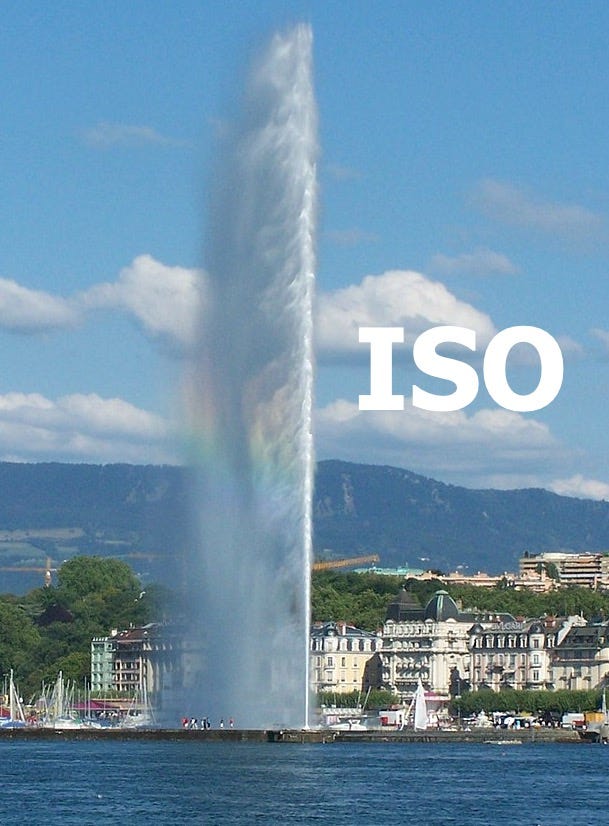Beyond the painted mess of education quality
How the ISO 21001, 29992, 29993, and 29994 standards clarify higher education quality
2021:2
Understanding, assessing, and communicating quality are some of the most confused topics in higher education. The confusion is somewhat understandable given the wide range of stakeholders and the diversity of institutions. Although understandable, the lack of clarity is unforgivable in a sector proud of having the best and brightest. All told, it is often a painted mess.

A set of current and developing ISO standards foretell change from the tangled notions of quality in higher education.
A standards-based approach
ISO or the International Organization for Standardization is an international organization based in Geneva, Switzerland, and is the world's largest developer of voluntary international standards. Since its founding in 1947 ISO has issued nearly 24,000 standards ranging from technical standards for measurement to quality processes in a range of economic sectors.
Different types of standards focus on product or service characteristics, processes, or an entire organizational management system. Some of the best-known standards include ISO 9001, issued in the 1980s and often used in manufacturing and services industries to define quality processes. Anyone using a major internet service provider will likely encounter another commonly used standard, ISO 27001 on information security management.
ISO 21001:2018 (Educational organizations — Management systems for educational organizations — Requirements with guidance for use), is a management system standard. That means it provides guidance for the management of an educational institution. It is not a standard focused on product or service quality or only on organizational processes. The painted mess of quality in higher education often comes in large part from thinking of quality as a product or service attribute rather than the management system supporting the delivery of quality outcomes.
Standards and the future of higher education
Higher education is at a turning point. The current model of an academic degree offered as a bundled product by an institution is near or past its expiration date. The Covid 19 pandemic only accelerated a trend towards remote delivery of educational services not tied to a specific location.
In the near future, an academic degree may consist of several certificates stacked as components to create the needed threshold for awarding a degree. An analysis we prepared of certificate programs in the U.S. identified over 100 certificate programs in healthcare alone. Google offers numerous job-ready certificates under its Grow with Google program.
The traditional bundled model is also challenged by the rise of full-standing corporate universities. A 2013 report by the Boston Consulting Group estimated the existence of 4,000 corporate universities worldwide. This sector is poised to grow given the workforce generational changes and the challenge to retain talent.
Four of the current ISO standards will help ensure that the educational experience in traditional higher education, certificate programs, and corporate universities use consistent good practices:
ISO 21001:2018 Educational organizations — Management systems for educational organizations;
ISO 29992:2018 Assessment of outcomes of learning services;
ISO 29993:2017 Learning services outside formal education; and
ISO 29994:2021 Education and learning services — Requirements for distance learning.
These standards help identify the outlines of effective organizational approaches to the delivery of quality educational services. The ISO standards are agnostic towards whether an institution is a traditional or alternative provider. This contrasts with accreditation and institutional authorization, which are the common systems of quality assurance for higher education. The standards-based approach thus broadens the scope beyond traditional higher education institutions.
But, doesn’t accreditation already provide the needed standards?
The answer is yes and no. Accreditation typically does mandate certain management systems but often contains subject-specific requirements. Accreditation is also country-specific and can vary by subject area. For example, the accreditation of a medical school is much different than that of a business school or a liberal arts college.
Accreditation by and large also does not address non-traditional programs such as certificates or the emerging set of new providers such as corporations or corporate universities. The ISO standards establish a baseline of elements of a management system regardless of whether an institution or provider is a traditional or a new entrant.
The specific coverage of distance learning and assessment allows a consistent focus on key areas of ensuring online learning system quality and measurement of learning outcomes. The rapid pivot to remote learning during the Covid 19 pandemic has accelerated trends toward online education and associated challenges and illustrates yet again the needs addressed by the standards.
How will the standards fit in with accreditation?
In my recent analysis published as “ISO Alongside, Instead, or Inside? The potential of ISO 21001:2018 to change and challenge higher education accreditation” three scenarios were identified.
Alongside would involve educational regulators requiring ISO certification in addition to accreditation or licensure.
Instead could involve a substitution of ISO certification for accreditation.
Inside might involve an accreditation body using ISO certification as a part of its recognition process.
It is likely that all three scenarios will exist for different types of providers and programs.
The next time you sign up for a course, perhaps you may want to look for an ISO-certified logo?
About the Ex4EDU.Report
This report is offered as a free-of-charge contribution by Lone Tree Academics, LLC, an educational services company focused on enabling excellence in higher education. Our services are focused around excellence through focused market knowledge, strategies, and Learningscapes™ built on solid foundations of curriculum and assessment.
For more information visit www.ltacademics.com






Well written and highly relevant article in understanding how ISO is handling the twists and turns in the quality debate. With tectonic changes taking place in industry and everything is pointing towards high technology, the leadership building process and the leaders themselves have to not mere brush with new technology but deep understanding of the new processes which is are still evolving. Never before in the past 100 years of history of quality and accreditation has the schools faced this sort of challenge and uncertainty, Covid or no Covid.